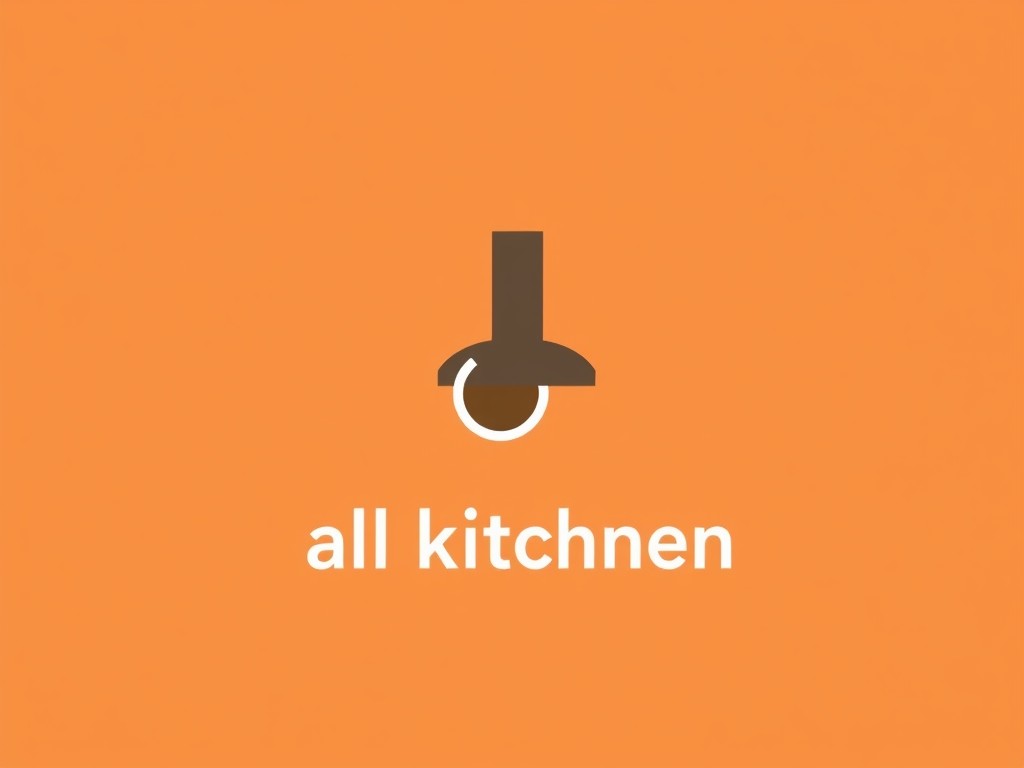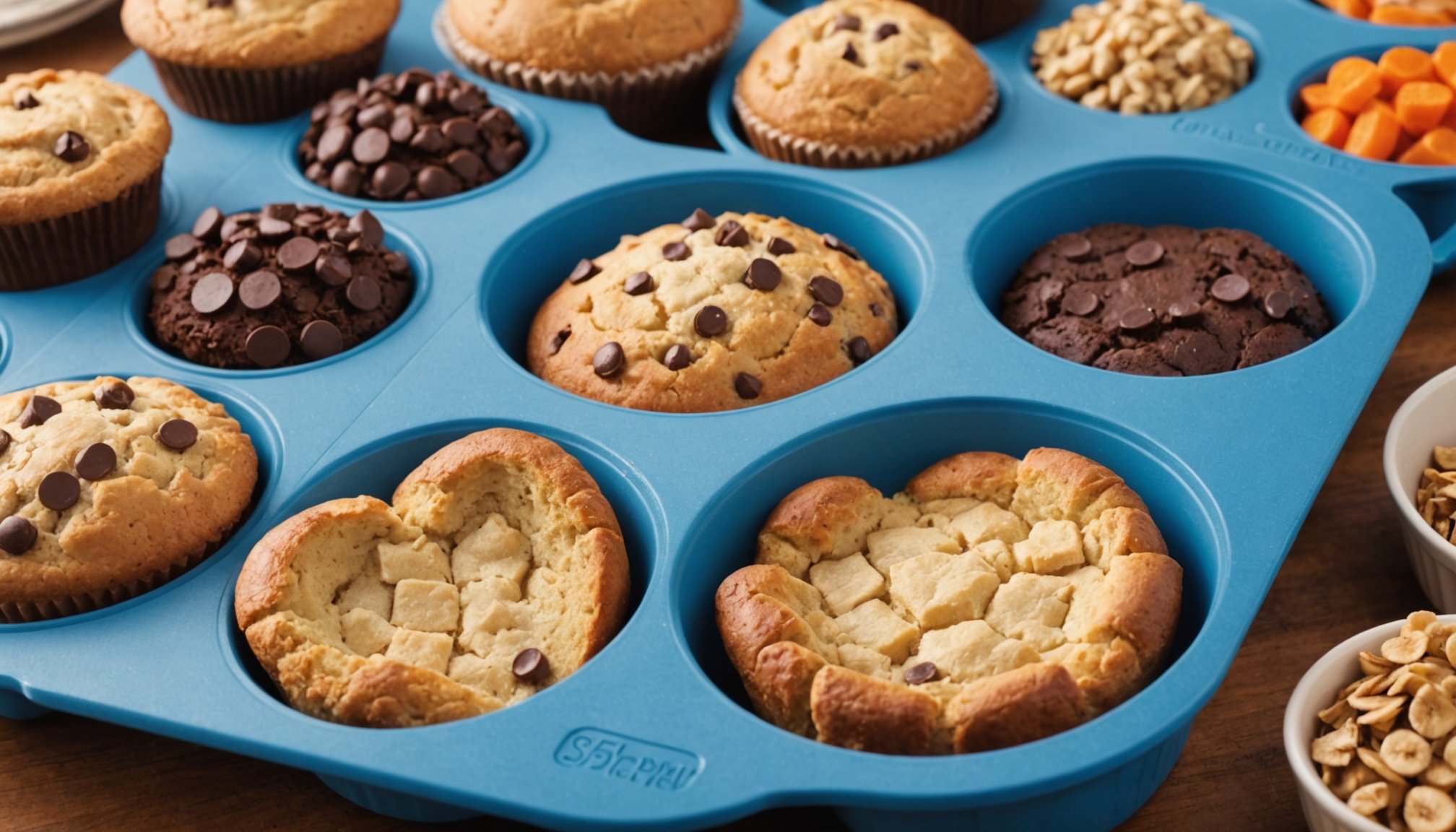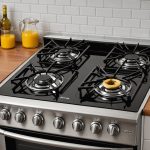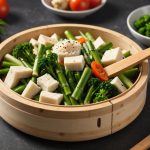Unleash Your Baking Potential: Explore the Sweet Advantages of Silicone Bakeware!
Why Silicone Bakeware is a Game-Changer in Your Kitchen
When it comes to baking, the right tools can make all the difference between a mediocre cake and a masterpiece. Silicone bakeware has become a staple in many kitchens, and for good reason. Here’s why you should consider adding silicone pans, molds, and sheets to your baking arsenal.
Non-Stick Perfection
One of the most significant advantages of silicone bakeware is its non-stick surface. Unlike traditional metal or glass pans, silicone ensures that your baked goods release effortlessly, reducing the need for additional oils or fats. This feature is particularly beneficial for delicate items like muffins, cakes, and cookies, which can be easily damaged during the removal process.
This might interest you : Select the ideal long-lasting and easy-to-clean baking sheet for your daily baking journeys
“For instance, using a silicone muffin pan like the Keliwa Silicone Muffin Pan makes it incredibly easy to remove your muffins without any sticking issues. The non-stick qualities also make cleaning a breeze,” notes a baking enthusiast.
Durability and Versatility
Silicone bakeware is remarkably durable and versatile. It can withstand a wide range of temperatures, from -40°C to 230°C (or even up to 260°C for some products), making it safe for use in ovens, microwaves, and freezers[2][3][4].
In the same genre : Discover the hidden advantages: elevate your healthy cooking with a bamboo steamer
“Silicone baking pans are designed to handle repeated heating and cooling cycles without warping or losing their shape. This makes them a great long-term choice for cooks,” explains a professional chef.
Key Features of Silicone Bakeware
Here are some of the key features that make silicone bakeware a favorite among bakers:
- Flexibility: Silicone is lightweight and flexible, making it easy to store and transport. This flexibility also helps in removing baked goods without damage.
- Heat Resistance: Silicone can handle high temperatures, making it safe for oven, microwave, and stovetop use.
- Easy Cleaning: Most silicone bakeware is dishwasher-safe, and even hand washing is a simple process with mild detergent and a non-abrasive sponge[2][4].
- Non-Porous: Silicone is a non-porous material, which means it doesn’t leach harmful chemicals into food and is safe for food contact as approved by the FDA[2][4].
How to Use Silicone Bakeware Safely and Effectively
To get the most out of your silicone bakeware, here are some practical tips:
Choosing the Right Silicone Products
When selecting silicone bakeware, it’s crucial to choose high-quality products from trusted brands. Look for products labeled as “food-grade” and “BPA-free” to ensure safety and performance.
“Always check the labels and follow the manufacturer’s advice to make smart choices. High-quality silicone products often have features like measurements to help you cook just right,” advises a kitchen expert.
Preparing Your Silicone Pans
While silicone pans are naturally non-stick, you might occasionally need to prepare them with nonstick cooking spray or a bit of butter or oil, especially if you’re baking sticky items.
“You can usually skip greasing silicone baking pans, but if you’re finding that your baked goods are still sticking, a light preparation can help,” suggests a baking blogger.
Using Silicone in the Oven and Microwave
Silicone bakeware is versatile and can be used in various cooking methods. Here’s how to use it safely:
- Oven Use: Place your silicone pan on a baking sheet for support, especially if the pan is flimsy. Follow the recipe’s temperature and time instructions, and adjust as needed.
- Microwave Use: Ensure the silicone product is labeled “microwave-safe.” Always check the manufacturer’s guidelines for specific temperature limits and cooking times[2][4].
Benefits and Advantages of Silicone Bakeware
Here are some detailed benefits that make silicone bakeware a must-have in your kitchen:
Easy Food Release and Cleaning
- Non-Stick Surface: Silicone’s non-stick surface makes food release easy, saving time on cleaning.
- Dishwasher Safe: Most silicone bakeware is dishwasher-safe, making cleaning a breeze. Simply place them on the top rack for a thorough and gentle cleaning experience[2][4].
Durability and Longevity
- Heat Resistance: Silicone can withstand high temperatures without deteriorating.
- Flexible and Lightweight: Silicone is easy to store and transport due to its flexibility and lightweight nature.
Versatility in Cooking Methods
- Oven, Microwave, and Freezer Safe: Silicone bakeware can be used in various cooking methods, from baking to freezing.
- Multi-Functional Use: Products like the Starfrit silicone mat can be used as a baking mat, microwave cover, splatter guard, or even as a placemat[3].
Frequently Asked Questions About Silicone Bakeware
Here are some common questions and answers to help you better understand the use and benefits of silicone bakeware:
Is Silicone Safe for Microwave Use?
Yes, food-grade silicone is microwave-safe and can handle high temperatures up to 428°F (220°C). Always check for the “microwave-safe” label on silicone products before use[2].
Are Silicone Molds Safe for Baking and Cooking?
Absolutely Silicone molds are heat-resistant, flexible, and safe for baking muffins, cakes, and other treats. They are also non-stick, making food release and cleanup easy[2].
Can I Put Silicone Products in the Dishwasher?
Yes, most silicone kitchen tools and bakeware are dishwasher-safe. Place them on the top rack for a thorough and gentle cleaning experience[2][4].
Practical Insights and Actionable Advice
Here are some practical tips to make the most out of your silicone bakeware:
- Avoid Using Sharp Tools: Never use sharp tools or utensils with your silicone baking pans and mats, as they can cause irreparable damage.
- Store Properly: Due to its flexibility, silicone bakeware can be stored in compact spaces. Ensure you clean and dry the items before storing them to prevent any moisture buildup.
- Check for Wear: Regularly inspect your silicone items for any signs of wear. If you notice any cracks or damage, it’s best to replace them to ensure safety and performance.
Comparison Table: Silicone vs. Traditional Bakeware
Here’s a comparison table to help you understand the differences between silicone bakeware and traditional metal or glass pans:
| Feature | Silicone Bakeware | Traditional Metal/Glass Bakeware |
|---|---|---|
| Non-Stick Surface | Naturally non-stick, easy food release | Often requires greasing or non-stick coating |
| Heat Resistance | Can withstand temperatures up to 428°F (220°C) | Varies by material; some can handle high temperatures, others may warp or break |
| Durability | Flexible, lightweight, and resistant to stains and scratches | Can be heavy, prone to rust or warping |
| Cleaning | Dishwasher-safe, easy hand washing | Some are dishwasher-safe, others require hand washing |
| Versatility | Safe for oven, microwave, freezer, and dishwasher use | Limited to specific cooking methods |
| Cost | Generally more expensive than traditional bakeware | Can range from affordable to very expensive |
| Storage | Compact storage due to flexibility | Often bulky and requires more storage space |
| Environmental Impact | Reusable, eco-friendly | Some materials may not be recyclable |
Silicone bakeware has revolutionized the way we bake and cook, offering a myriad of benefits that make it a favorite among both home cooks and professional chefs. From its non-stick surface and durability to its versatility in various cooking methods, silicone bakeware is an indispensable tool in any kitchen.
“Using silicone in the kitchen is not only smart but also good for the planet. It’s eco-friendly and can be recycled. With the right care, silicone bakeware can be a safe and useful part of your kitchen for many years,” says a kitchen enthusiast.
By understanding the advantages and proper use of silicone bakeware, you can unleash your full baking potential and enjoy the convenience, safety, and quality that this material provides. So next time you’re in the market for new bakeware, consider giving silicone a try – your baked goods, and the environment, will thank you.











